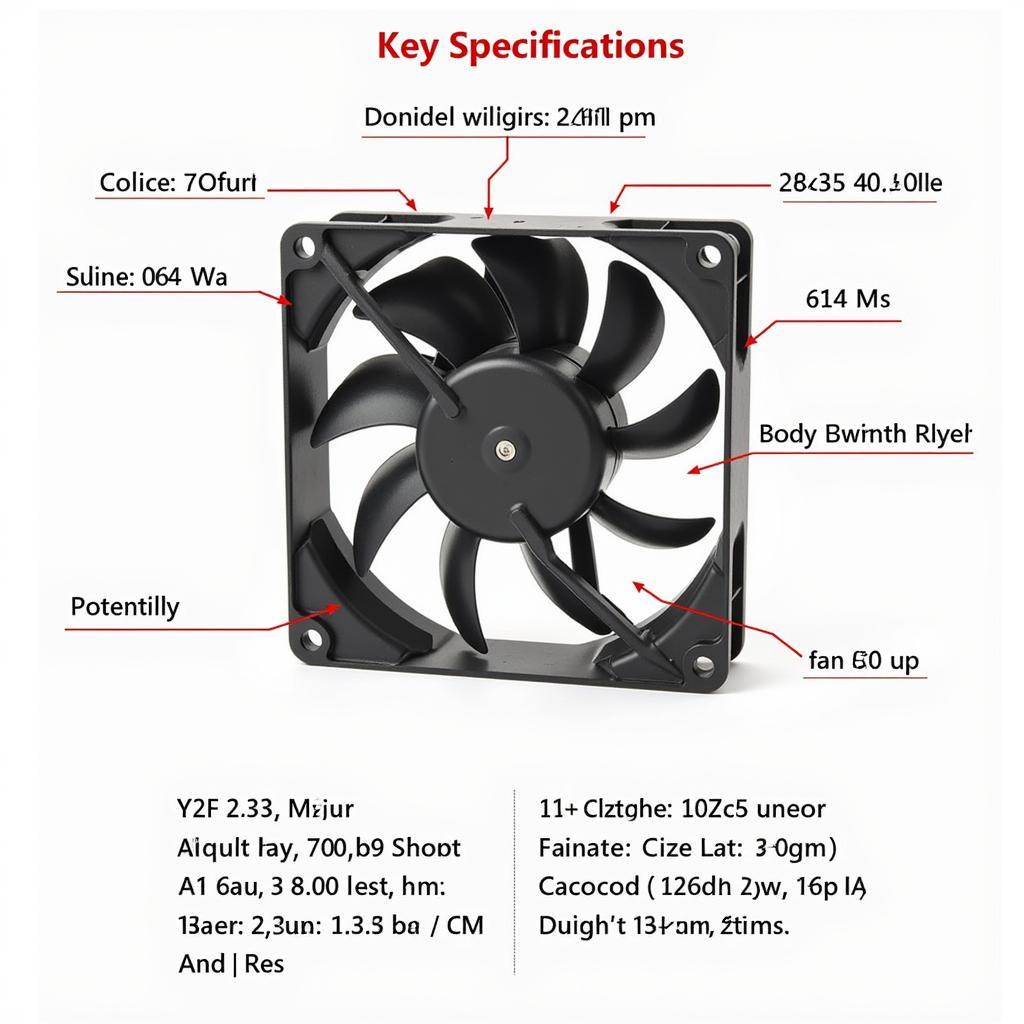So, you want to take control of your CPU fan speed? Whether you’re aiming for a quieter system or trying to fine-tune your cooling performance, understanding how to adjust your fan speed is essential. This guide will walk you through everything you need to know about Changing Fan Cpu Speed.
Why Change Your CPU Fan Speed?
Before we dive into the “how”, let’s address the “why”. There are several reasons you might want to change your CPU fan speed:
- Noise Reduction: A constantly running fan at high speed can be quite noisy. Lowering the fan speed, especially when the CPU is under low load, can dramatically reduce system noise.
- Temperature Control: While default settings are usually adequate, manually adjusting fan speed can give you more precise control over your CPU temperature.
- Increased Fan Lifespan: Running your fan at full speed all the time can shorten its lifespan. By adjusting the fan speed according to the CPU load, you can potentially extend its operational life.
Methods for Changing CPU Fan Speed
There are primarily three ways to change your CPU fan speed:
1. BIOS/UEFI Settings
Your computer’s BIOS (Basic Input/Output System) or UEFI (Unified Extensible Firmware Interface) often provides the most direct control over fan speeds.
- Accessing BIOS/UEFI: The process varies depending on your motherboard manufacturer, but it usually involves pressing a specific key (e.g., Del, F2, F10) during startup.
- Navigating the Menu: Look for options related to “Hardware Monitoring,” “Fan Control,” or “CPU Fan.” You might find pre-set profiles or the ability to manually adjust the fan curve (the relationship between CPU temperature and fan speed).
2. Motherboard Software
Many motherboard manufacturers provide software utilities that offer advanced fan control options from within your operating system:
- Popular Options: Examples include ASUS AI Suite, MSI Dragon Center, Gigabyte APP Center, and ASRock A-Tuning.
- Customization: These applications typically allow you to set custom fan curves, create profiles for different scenarios (gaming, quiet mode, etc.), and even control individual fan headers on your motherboard.
3. Third-Party Software
Various third-party applications offer robust fan control functionality:
- SpeedFan: A popular freeware option known for its comprehensive monitoring and control features.
- Argus Monitor: A paid software that provides detailed sensor readings, fan control, and hard drive health monitoring.
- Corsair Link: If you use Corsair components (e.g., fans, coolers, PSUs), Corsair Link allows you to manage fan speeds, lighting, and other device settings. This is where understanding a custom fan curve corsair link becomes important for optimizing your setup.
Note: When using third-party software, ensure it’s compatible with your motherboard and operating system.
Finding the Right Balance
The key to effective fan control is finding the balance between cooling performance and noise levels.
- Monitoring Temperatures: Use monitoring software (often included in the BIOS/UEFI or motherboard utilities) to keep an eye on your CPU temperature under various loads.
- Stress Testing: Run stress tests to simulate demanding workloads and observe how your fan settings impact temperatures.
- Adjusting Incrementally: Make small adjustments to your fan curve or speed settings, test the results, and fine-tune until you achieve the desired balance.
Conclusion
Changing your CPU fan speed is a relatively straightforward process that can lead to a quieter system, better temperature control, and potentially a longer lifespan for your fans. Whether you prefer the simplicity of BIOS settings, the convenience of motherboard software, or the advanced control of third-party applications, there’s a method out there to suit your needs. Just remember to monitor your temperatures closely and make adjustments gradually to find the optimal balance for your system.







